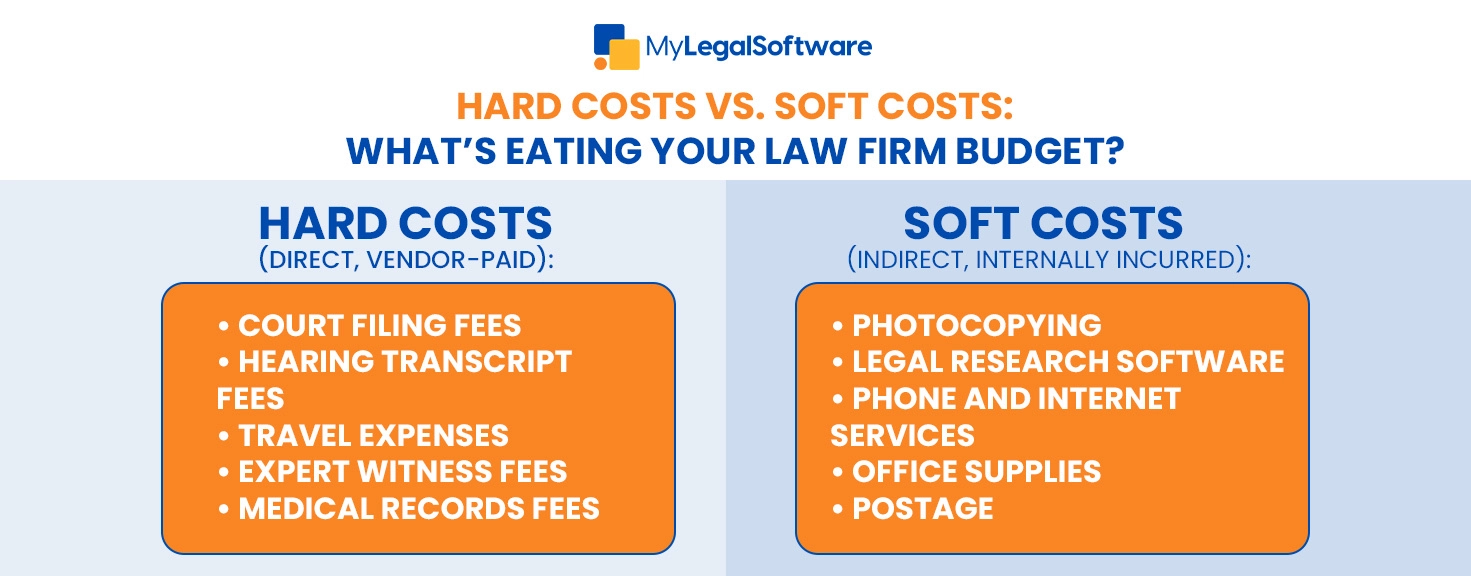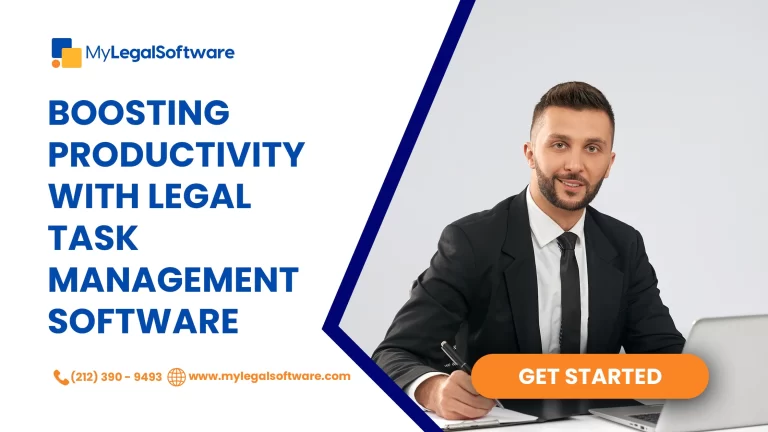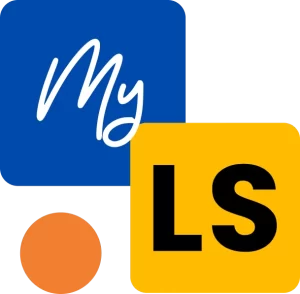Successfully running a law firm in 2025 means you can monitor your income and expenditure like a pro. A major part of this is knowing where your money goes. Tracking law firm expenses is important to maintain a sustainable law firm budget.
This blog discusses the difference between hard and soft costs and how to manage both.
What is the meaning of Hard Costs & Soft Costs?
Hard costs (direct costs) are client-related expenses that your firm pays upfront to a vendor or third party. These are usually reimbursable and directly tied to each case.
Soft costs (indirect costs) are internal overhead expenses, often small but frequent, that may or may not be billed to clients.
What are Examples of Hard Costs & Soft Costs?

Hard Costs (Direct & Tangible)
You usually pay these out-of-pocket for each case:
- Court filing fees
- Expert witness fees
- Subpoena or medical records fees
- Travel or accommodation for client work
- Mediation or deposition costs
Clients are more likely to accept and reimburse hard costs as they directly affect their case.
Soft Costs (Operational & Internal)
These costs are often incurred by your firm or added to the bill as flat-rate admin fees:
- Printing and photocopying
- Legal research software
- Postage and shipping
- Office Supplies
- Phone and internet bills
- Software subscriptions
Soft costs can add up. You must decide which of these to pass on to clients and how you present them in invoices.
Importance of Tracking These Costs
Here is why keeping tabs on both hard and soft costs is essential for your law firm:
1. Accurate Finances
Misclassifying expenses can disorganize your accounting. Separating hard and soft costs can ensure your law firm budget remains clean and you avoid underbilling or overbilling.
2. More Profitability
Tracking expenses helps identify waste, and fixing it boosts your profits.
3. Increased Client Trust
When clients see exactly what they are being charged for, broken down by cost type, they are more likely to pay without question.
4. Regulatory Compliance
Most legal billing regulations require accurate, detailed records. Proper classification ensures your firm stays audit-ready and ethically compliant.
How to Track Hard and Soft Costs in 2025?
Manual tracking has become risky and outdated. The smart move is to use a solution like MyLegalSoftware (MyLS).

Here is how MyLS helps manage your law firm expenses:
1. Time and Expense Tracking
Track time and expenses from any device, desktop or mobile. MyLS helps you log entries so you capture everything as it happens. Say goodbye to missed billables.
2. Custom Financial Reporting
Do you want to know which client has overdue invoices or where most of your budget is going? MyLS generates custom reports based on the following:
- Client
- Case
- Expense type
- Payment history
3. Smart Invoicing Templates
MyLS lets you create invoices that distinguish between hard and soft costs. Its pre-built templates mean faster invoicing and fewer errors.
Smart Budgeting with MyLS
Budgeting tracks what you spend and guides smart business decisions.
Here is how MyLS helps you stay on top of your law firm budget:
- See real-time financial summaries
- Set expense alerts
- Evaluate cost-effectiveness by practice area
- Simplify reimbursements and collections
With MyLS, you will spend less time chasing receipts and more time practicing law.
Start your free 14-day trial of MyLegalSoftware today, or schedule a demo.
Frequently Asked Questions About Hard & Soft Costs in a Law Firm
What are hard and soft costs in a law firm?
Should I bill clients for soft costs?
How do hard and soft costs affect my law firm’s budget?
Can I track hard and soft costs using MyLegalSoftware (MyLS)?
What if a client refuses to pay for soft costs?
How will expense tracking help with legal compliance?
Hard costs are direct, out-of-pocket expenses paid to third parties on behalf of a client, like court filing fees. Soft costs are indirect internal expenses, such as printing or research tools.
It depends on your firm’s billing policy. Some firms bear soft costs as overhead, while others charge them on to clients. If you bill for soft costs, you should explain them in your invoices to prevent misunderstandings.
Both types of expenses affect your budget. Tracking them separately gives you better insights to control overhead and make better financial decisions.
MyLS makes tracking both types of costs easy expense logging, custom reporting, and invoicing. It allows you to categorize each expense properly, so you always know where your money goes.
Set expectations early in your engagement letter or fee agreement. Always explain what your billing includes to avoid misunderstandings. With MyLS, you can generate invoices that improve transparency and reduce client pushback.
Proper expense tracking ensures your firm complies with billing standards and ethical rules. By maintaining clear records of hard and soft costs, you reduce risks in case of audits and protect your firm’s reputation.
Do you want to know How Legal Team Management is Transforming Legal Practice in 2025? Go here.








